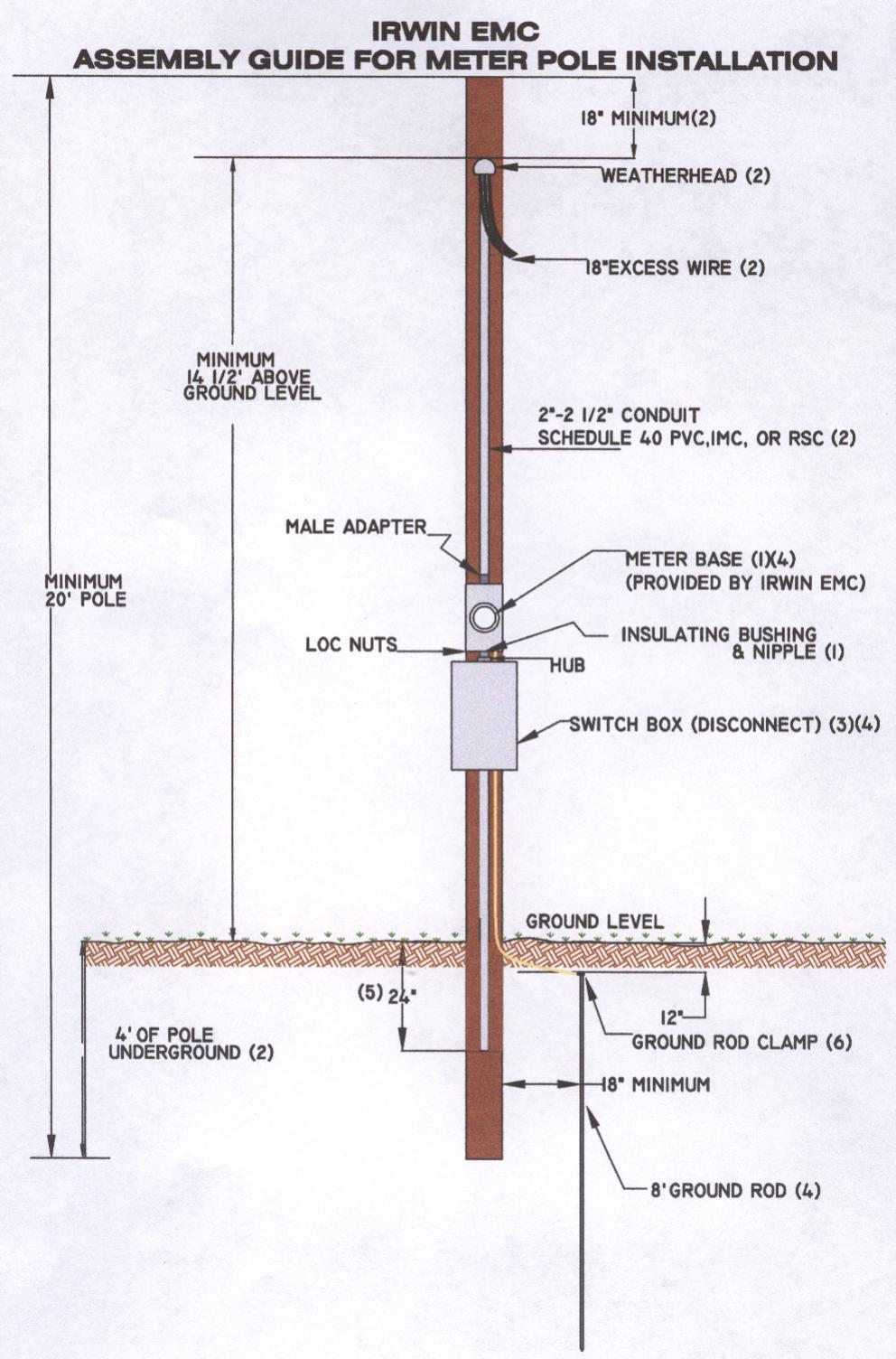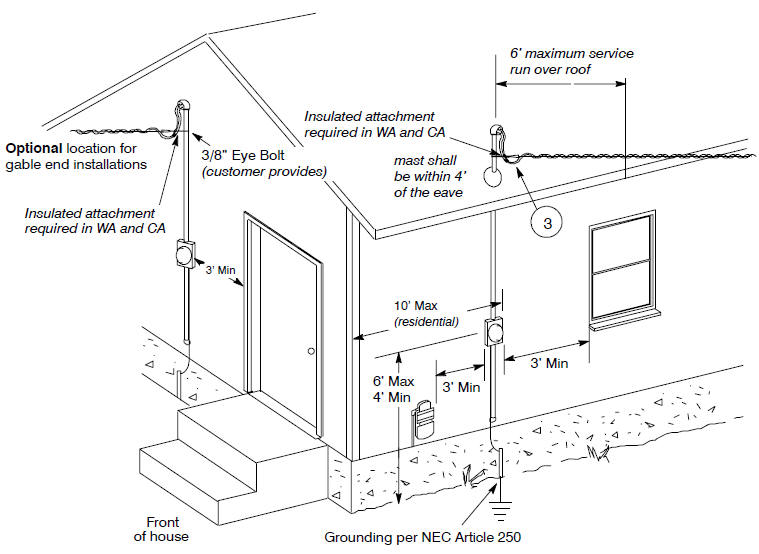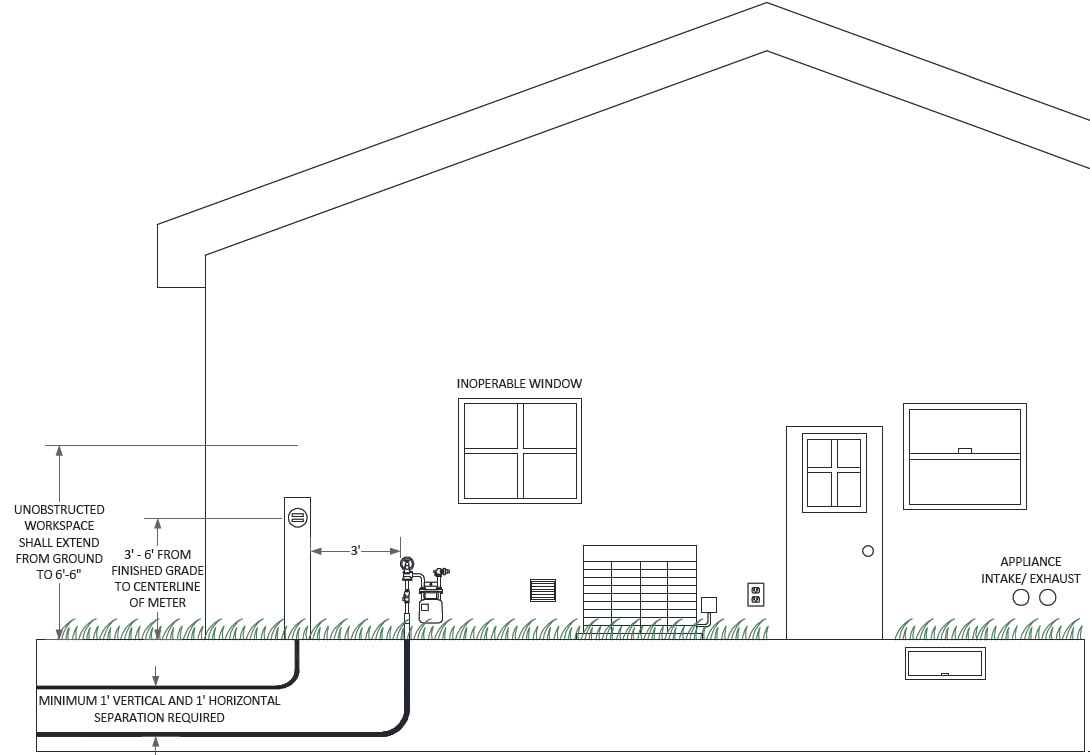Electric service and meter installations require compliance with local codes and utility regulations. Proper permits and inspections are essential.
Electric service and meter installations are crucial for ensuring safe and efficient power delivery to homes and businesses. Installations must adhere to specific standards set by local authorities and utility companies to prevent hazards and ensure reliability. This involves obtaining necessary permits, which confirm that the work meets all safety and technical requirements.
Inspections by qualified personnel are mandatory to verify that installations are correctly executed. Understanding these requirements helps in avoiding delays and ensures a smooth process. Proper planning and adherence to regulations protect both property and occupants, ensuring a seamless connection to the power grid.
Introduction To Electric Service And Meter Installations
Electric service and meter installations are vital for homes and businesses. These installations ensure that you receive a reliable supply of electricity. Proper setup is necessary to avoid hazards and ensure efficiency.
The Importance Of Proper Installations
Proper electric service installations are crucial for safety and efficiency. Incorrect installations can lead to electrical fires and system failures. It is essential to follow the guidelines provided by utility companies.
Improper meter installations can result in inaccurate billing. This can lead to higher costs and potential disputes. Ensuring meters are installed correctly helps in accurate energy consumption tracking.
Overview Of Electric Service And Metering
Electric service refers to the setup that delivers electricity to your property. This includes wiring, circuits, and distribution panels. All components must meet local electrical codes and standards.
Metering involves the devices used to measure electricity usage. These meters track how much electricity you consume. The data collected helps utility companies bill you correctly.
Key Components of Electric Service:
- Service Entrance
- Main Disconnect
- Distribution Panel
| Component | Description |
|---|---|
| Service Entrance | Point where electricity enters the property. |
| Main Disconnect | Switch to disconnect power during emergencies. |
| Distribution Panel | Panel that distributes power to circuits. |
Understanding these components helps in ensuring a safe and efficient electric service setup.
Legal And Regulatory Considerations
Understanding the legal and regulatory considerations is crucial for electric service and meter installations. These rules ensure safety, compliance, and proper functioning of electrical systems.
National And Local Codes
Electric service installations must follow both national and local codes. The National Electrical Code (NEC) sets the nationwide standards. Local codes may add specific rules based on regional needs.
For example, the NEC covers wiring standards, grounding, and circuit protection. Local codes might address specific weather conditions or building types. Always check both sets of codes to ensure compliance.
Here is a comparison of some common requirements:
| National Code | Local Code |
|---|---|
| Standard wiring sizes | Weather-resistant materials |
| Grounding and bonding | Seismic zone requirements |
| Overcurrent protection | Flood zone considerations |
Utility Company Requirements
Each utility company has its own requirements for electric service installations. These are designed to ensure safety and reliability.
Here are some common utility company requirements:
- Approved meter location
- Specific meter types
- Clearance around the meter
- Proper labeling of electrical panels
It’s important to consult with the utility company before starting any installation. Their guidelines will help avoid costly modifications later.
Here is an ordered list of steps to follow:
- Contact the utility company
- Review their requirements
- Plan the installation
- Get necessary permits
- Complete the installation
- Schedule an inspection
Following these steps ensures a smooth installation process. It also guarantees compliance with all legal and regulatory considerations.
Choosing The Right Equipment
Choosing the right equipment is crucial for safe and efficient electric service and meter installations. Proper equipment ensures reliable power delivery and prevents electrical hazards. Let’s explore the types of electric meters and service panels available.
Types Of Electric Meters
Electric meters measure electricity usage. There are different types available:
- Analog meters: These are traditional meters with a spinning dial.
- Digital meters: These display usage on a digital screen.
- Smart meters: These can send usage data to the utility company automatically.
Smart meters offer more features. They help in monitoring and managing energy use more effectively.
Service Panels And Circuit Breakers
Service panels distribute power throughout a building. They house the circuit breakers which protect electrical circuits from overloads. Choosing the right panel and breakers is vital:
- Main service panel: This is the central hub for electrical circuits.
- Subpanels: These are used for distributing power to specific areas.
- Standard circuit breakers: These protect against overloads by tripping when current is too high.
- GFCI breakers: These protect against ground faults, commonly used in kitchens and bathrooms.
- AFCI breakers: These protect against arc faults, which can cause fires.
Ensure you choose a panel with enough capacity for your needs. Also, select the appropriate circuit breakers for enhanced safety.
| Equipment | Function |
|---|---|
| Analog Meter | Measures electricity usage with a spinning dial |
| Digital Meter | Displays usage on a digital screen |
| Smart Meter | Sends usage data automatically to utility |
| Main Service Panel | Central hub for electrical circuits |
| Subpanel | Distributes power to specific areas |
| Standard Circuit Breaker | Protects against overloads |
| GFCI Breaker | Protects against ground faults |
| AFCI Breaker | Protects against arc faults |

Credit: www.irwinemc.com
Location And Space Requirements
Choosing the right location and space for your electric service and meter installations is crucial. Proper placement ensures efficiency and safety. This section covers essential guidelines for positioning and maintaining your electric meters.
Meter Placement Guidelines
The meter should be easily accessible and visible. Place it at a height between 4 to 6 feet from the ground. Avoid placing meters in areas prone to flooding. Keep meters away from sources of heat, such as furnaces or boilers. Ensure it is not obstructed by plants or structures.
Clearance And Accessibility
Maintain a clearance of 3 feet around the meter for easy access. Do not place objects in front of the meter. Ensure the meter is accessible for readings and maintenance. Avoid placing meters behind locked gates or doors. Provide a clear path to the meter, free of obstacles.
Safety Precautions And Procedures
Ensuring safety during electric service and meter installations is crucial. Following proper safety precautions and procedures can prevent accidents and injuries.
Working With Live Circuits
When working with live circuits, always prioritize safety. Never assume a circuit is off. Verify with a reliable tester first. Use insulated tools to avoid electric shock. Keep your hands dry and wear rubber-soled shoes.
Follow these steps for maximum safety:
- Turn off the power at the main breaker.
- Lock and tag the breaker to prevent accidental reactivation.
- Test the circuit with a voltage tester.
- Use insulated tools and wear protective gear.
Personal Protective Equipment
Wearing appropriate personal protective equipment (PPE) is essential. PPE shields you from electrical hazards. Always wear the following:
| PPE Item | Purpose |
|---|---|
| Insulated Gloves | Protects hands from electric shock |
| Safety Glasses | Shields eyes from sparks and debris |
| Hard Hat | Protects head from falling objects |
| Rubber-Soled Shoes | Prevents grounding and electric shock |
Follow these steps to ensure your PPE is effective:
- Inspect all PPE before use.
- Replace damaged or worn-out equipment.
- Ensure PPE fits properly and is comfortable.
- Store PPE in a clean, dry place.
Wearing the right PPE can save your life. Never skip this step.

Credit: www.finehomebuilding.com
Installation Steps For Electric Meters
Setting up an electric meter requires precision and adherence to standards. The correct installation ensures reliable service and accurate billing. Below are the key steps for installing electric meters.
Mounting The Meter
The meter must be mounted on a sturdy surface. Choose a location that is easily accessible for readings and maintenance.
- Use a weatherproof enclosure for outdoor installations.
- Ensure the mounting height is within 5 to 6 feet from the ground.
- The surface should be flat and stable.
- Secure the meter with bolts or screws to prevent tampering.
Connecting The Service Lines
Connecting service lines involves linking the meter to the power supply. This step is crucial for the safe operation of the meter.
- Turn off the main power supply before starting.
- Identify the line and load terminals on the meter.
- Connect the incoming service lines to the line terminals.
- Attach the load lines to the load terminals.
- Tighten all connections securely to avoid loose wires.
- Restore the main power supply and test the meter for proper operation.
| Step | Description |
|---|---|
| 1 | Turn off the main power supply. |
| 2 | Identify line and load terminals on the meter. |
| 3 | Connect incoming service lines to line terminals. |
| 4 | Attach load lines to load terminals. |
| 5 | Tighten all connections securely. |
| 6 | Restore power and test the meter. |
Testing And Commissioning
The testing and commissioning phase ensures that electric service and meter installations work correctly. This step verifies the meter’s functionality and ensures accurate readings. Below, we delve into specific tasks involved in this phase.
Verification Of Meter Functionality
The first step is the verification of meter functionality. Technicians check if the meter is working. They connect the meter to the electric system and observe its operations.
- Connect the meter to the electric system.
- Observe the meter’s initial readings.
- Check for any error messages or malfunctions.
This process is crucial. It confirms that the meter is operational. If any issues arise, they get fixed immediately.
Ensuring Accurate Readings
Ensuring accurate readings is the next step. Meters must provide precise measurements.
- Calibrate the meter using standard reference tools.
- Compare meter readings with known values.
- Adjust settings for accurate data.
Accurate readings are important. They ensure customers are billed correctly. Any discrepancies are corrected promptly.
Below is a table showing common issues and solutions:
| Issue | Solution |
|---|---|
| Incorrect Readings | Recalibrate the meter |
| Meter Malfunction | Replace faulty components |
| Data Transmission Errors | Check network connections |
By following these steps, the testing and commissioning phase ensures reliable electric service.

Credit: tvetacademy.org
Maintenance And Troubleshooting
Proper maintenance and troubleshooting are vital for electric service and meter installations. These tasks ensure everything runs smoothly and safely. Regular checks help identify issues before they become big problems.
Routine Maintenance Tasks
Routine maintenance tasks keep your electric service in top shape. Here are some common tasks:
- Inspect meters for damage.
- Check connections for tightness.
- Test meter accuracy.
- Clean meter enclosures.
These steps help maintain the efficiency and safety of your electric service.
Identifying And Resolving Issues
Identifying problems early can save time and money. Here are some signs of trouble:
- Meter not recording usage.
- Loose or exposed wires.
- Unusual noises or smells.
If you spot any of these issues, take action right away.
Follow these steps to resolve issues:
- Turn off the main power.
- Examine the meter and connections.
- Replace damaged parts.
- Restore power and test the system.
These steps can help fix problems and prevent further damage.
Advanced Metering Infrastructure
The Advanced Metering Infrastructure (AMI) is revolutionizing the way electric services operate. It ensures efficient energy management and improves service reliability. Let’s explore key aspects of AMI.
Smart Meters And Remote Monitoring
Smart meters are the cornerstone of AMI. They provide real-time data and offer many advantages:
- Accurate energy consumption tracking
- Instantaneous fault detection
- Enhanced billing accuracy
With remote monitoring, utility companies can manage meters from afar. This reduces the need for manual meter readings. It also enables faster response times during outages.
Smart meters send data directly to the utility’s central system. This allows for proactive maintenance and better grid management.
The Future Of Meter Technology
Meter technology is rapidly evolving. The future promises even smarter solutions:
- Integration with smart home devices
- AI-driven energy usage insights
- Blockchain for secure data transactions
These advancements will empower consumers to manage their energy use better. They will also enhance the resilience of the electrical grid.
Embracing new meter technologies will lead to a more sustainable and efficient energy system.
Frequently Asked Questions
Can I Install My Own Meter?
No, you can’t install your own meter. Only certified professionals can install electricity meters legally.
What Is The Height Code For Electrical Meters?
The standard height for electrical meters is typically between 4 to 6 feet from the ground. Local codes may vary.
How Far Does An Electric Meter Have To Be From A Window?
An electric meter should be at least 3 feet away from a window. This distance ensures safety and easy access.
How High Off The Ground Does A Meter Socket Need To Be?
A meter socket should be installed 4 to 6 feet above the ground. This ensures accessibility and compliance with most regulations.
Conclusion
Understanding the requirements for electric service and meter installations ensures safety and efficiency. Proper planning and compliance with regulations are crucial. Always consult a professional electrician for installation and maintenance. Following these guidelines helps avoid potential hazards and ensures seamless electric service.
Stay informed and prioritize safety in every electrical project.




